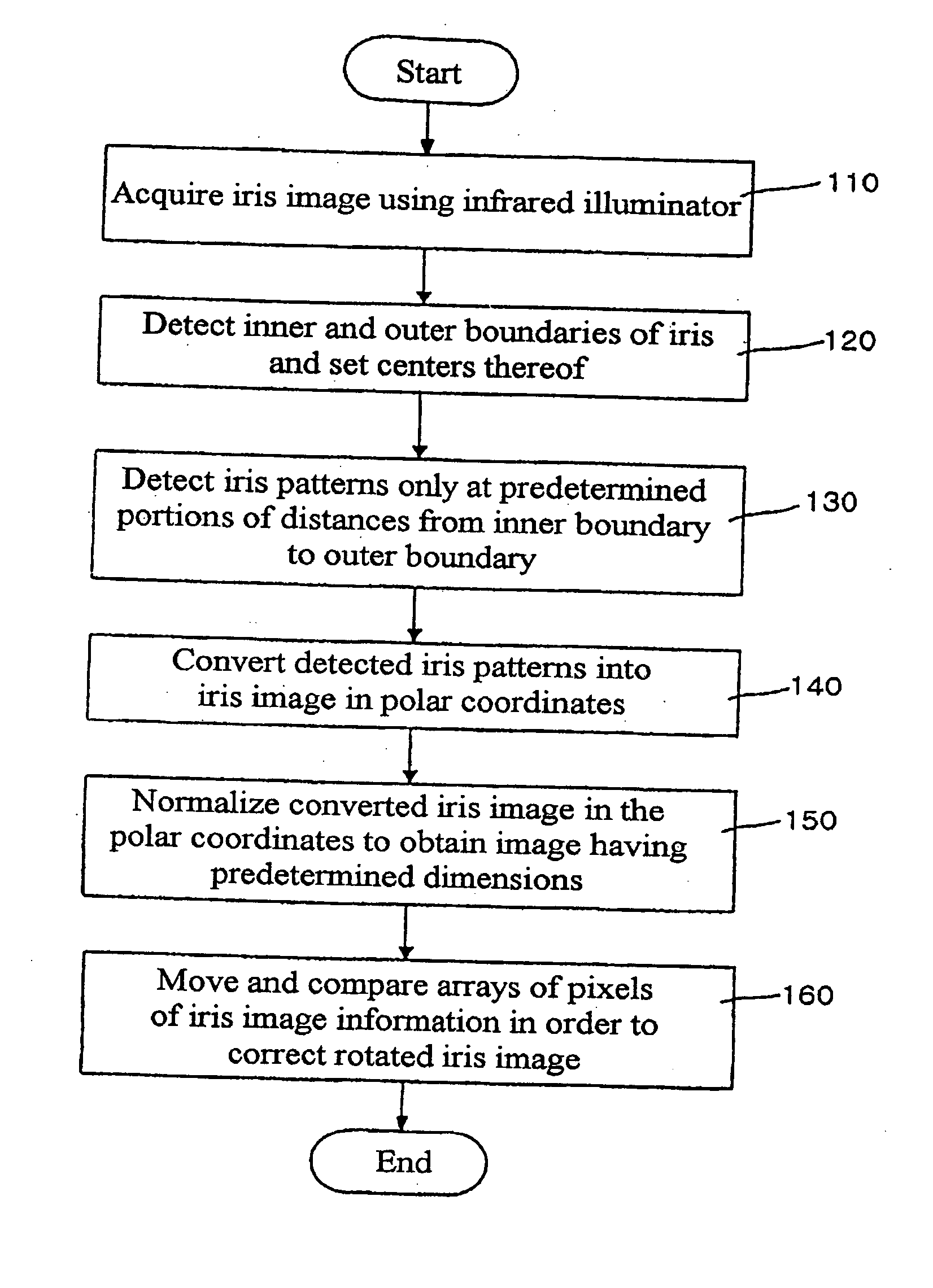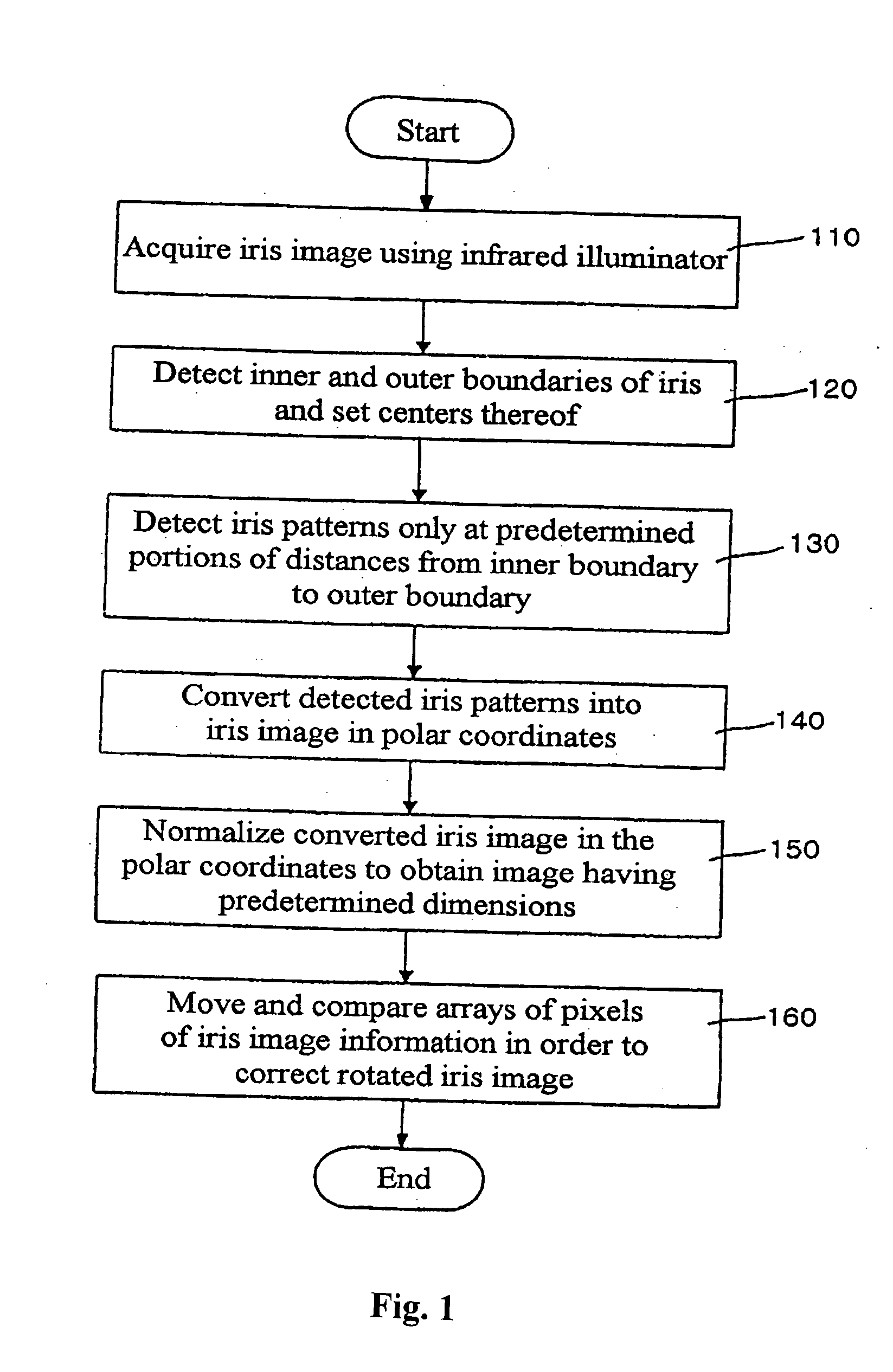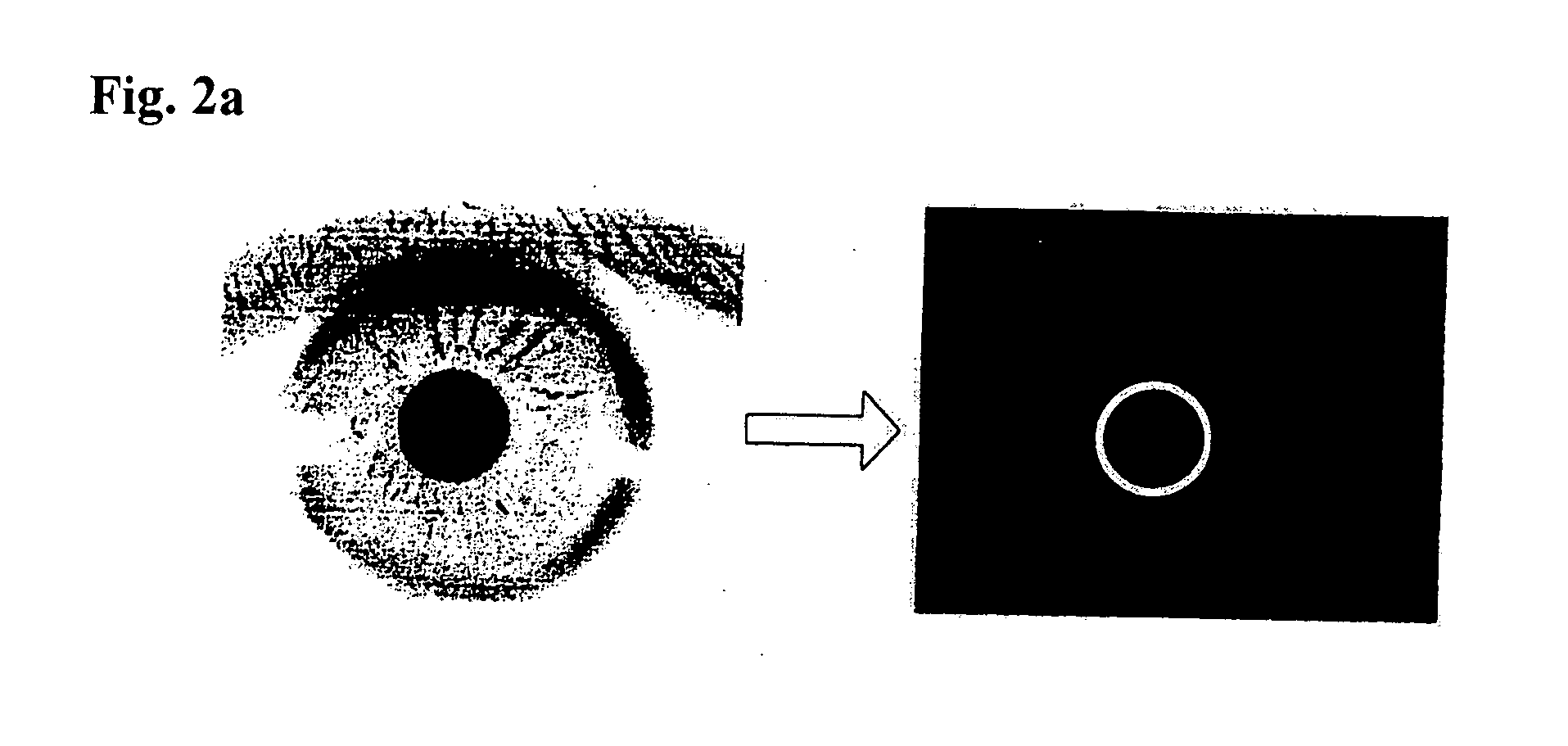Iris image data processing for use with iris recognition system
a technology of iris recognition and image data, applied in image data processing, person identification, instruments, etc., can solve problems such as inability to accurately detect inner/outer boundaries
- Summary
- Abstract
- Description
- Claims
- Application Information
AI Technical Summary
Benefits of technology
Problems solved by technology
Method used
Image
Examples
Embodiment Construction
[0029] Hereinafter, a non-contact type human iris recognition method by correction of a rotated iris image according to the present invention will be described in detail with reference to the accompanying drawings and, in particular, to FIG. 1.
[0030] FIG. 1 is a flowchart explaining procedures of a normalization process of an iris image according to the present invention. Referring to FIG. 1, at step 110, an eye image is acquired by image acquisition equipment using an infrared illuminator and a visible light rejection filter. At this time, a reflective light is caused to be gathered in the pupil of an eye so that information on the iris image is not lost. At step 120, inner and outer boundaries of the iris are detected in order to extract only an iris region from the acquired eye image, and the center of the detected inner and outer boundaries is set. Step 120 is performed by a method for detecting the inner and outer boundaries of the iris using differences in pixels of a Canny ed...
PUM
 Login to View More
Login to View More Abstract
Description
Claims
Application Information
 Login to View More
Login to View More - R&D
- Intellectual Property
- Life Sciences
- Materials
- Tech Scout
- Unparalleled Data Quality
- Higher Quality Content
- 60% Fewer Hallucinations
Browse by: Latest US Patents, China's latest patents, Technical Efficacy Thesaurus, Application Domain, Technology Topic, Popular Technical Reports.
© 2025 PatSnap. All rights reserved.Legal|Privacy policy|Modern Slavery Act Transparency Statement|Sitemap|About US| Contact US: help@patsnap.com



